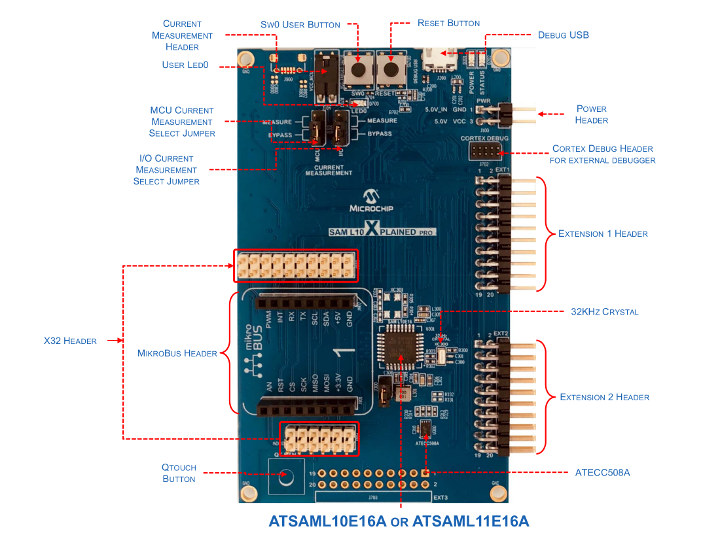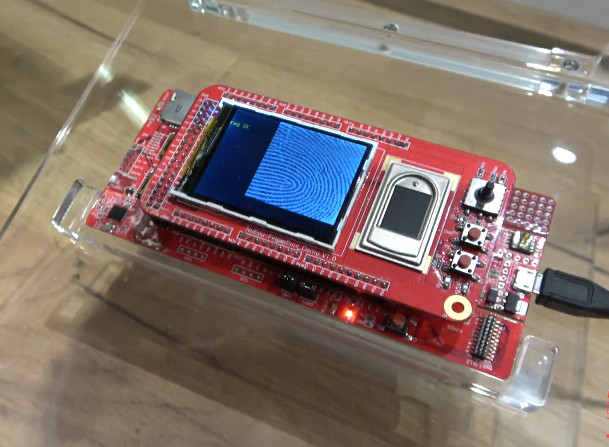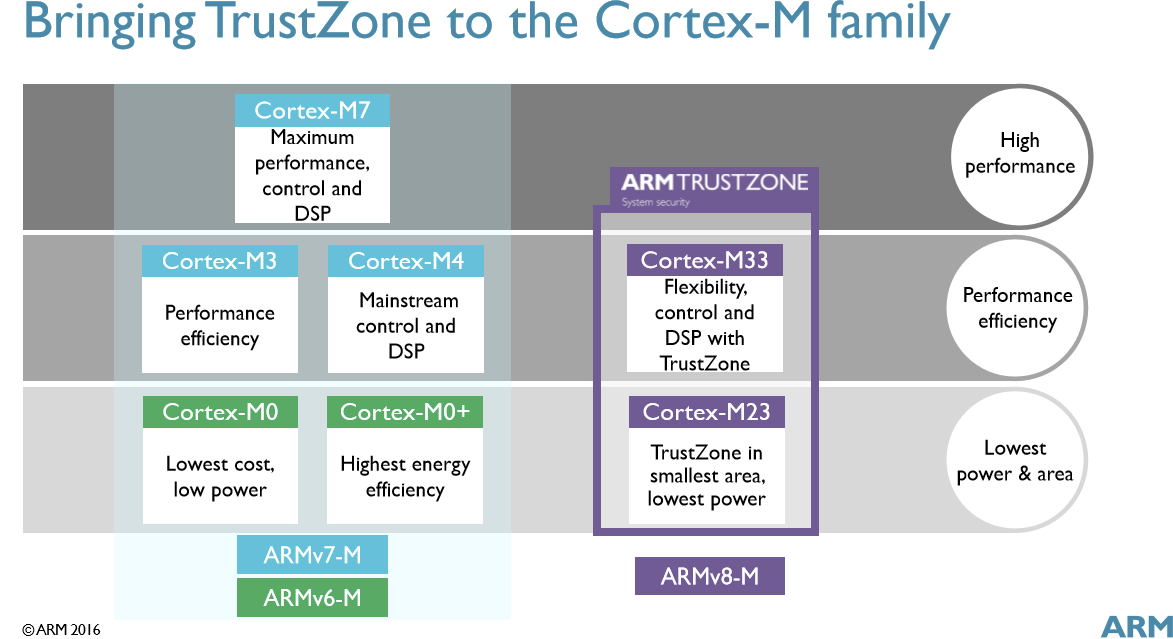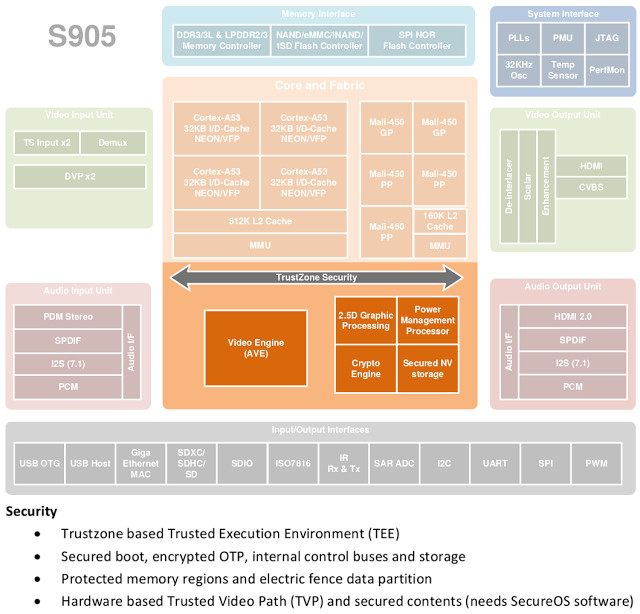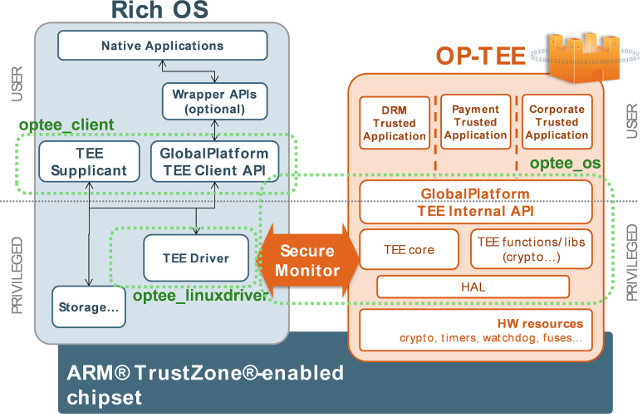Microchip has recently announced new SAM L10 and SAM L11 Arm Cortex-M23 MCU families, with the SAM L11 family featuring Arm TrustZone for Armv8-M that provides hardware isolation between certified libraries, IP and application code. SAM L10 & SAM L11 MCU Families Key features: Arm Cortex M23 Core @ 32 MHz Up to 64 KB Flash and 16 KB SRAM picoPower Technology less than 25 μA/MHz in active mode less than 100 nA in sleep mode Fast wakeup time: 1.5 μS Flexible power saving features Enhanced Peripheral Touch Controller (PTC) with improved water tolerance, noise immunity and responsiveness Security (for SAM L11 only) Chip-level tamper resistance Arm TrustZone technology Secure boot Secure bootloader Crypto accelerators Secure key storage Op amp ADC and DAC Package – VQFN32, TQFP32, WLCSP32, VQFN24, SSOP24 Microchip SAM L10 MCU achieved a ULPMark score of 405, or over 200 percent better performance compared to the nearest […]
NuMicro M2351 TrustZone Enabled ARM Cortex M23 MCU is Designed for Fingerprint Applications
ARM Cortex-M23 & M33 ARMv8-M cores were unveiled at ARM Techcon 2016 last October. They are the first MCU class cores to support TrustZone technology for better security, and one of the first micro-controllers to feature the technology is Nuvoton’s NuMicro M2351 Cortex M23 MCU designed for fingerprint applications. NuMicro M2351 MCU specifications Processor Core – ARM Cortex-M23 ARMv8-M core @ up to 48 MHz Memory – 96 KB embedded SRAM Storage – Up to 512 KB embedded flash with dual bank mode supporting OTA firmware update, 32 KB Secure Boot ROM Display IF – 8 COM x 40 SEG controller with internal charge pump for segment LCD panel Peripherals – UART, SPI, I²C, GPIOs, USB and ISO 7816-3 for smart card reader. Security features TrustZone Technology 8 Memory Protection Units (MPU) 8 Security Attribution Units (SAU) Implementation Defined Attribution Unit (IDAU) 2 KB OTP ROM with additional 1KB lock […]
ARM Introduces Secure Cortex-M23 and Cortex-M33 ARMv8-M MCU Cores, and Bluetooth 5 Cordio Radio IP for IoT Applications
ARM TechCon 2016 is now taking place in Santa Clara, California, USA, as ARM has made three announcements for the Internet of Things, the focus of SoftBank going forward, with two ARM Cortex-M ARMv8-M cores integrating ARM TrustZone technology, namely Cortex-M23 low power small footprint core, and Cortex-M33 core with processing power similar to Cortex-M3/M4 cores, as well as Cordio Radio IP for Bluetooth 5 and 802.15.4 connectivity. ARM Cortex-M23 ARM Cortex-M23, based on the ARMv8-M baseline architecture, is the smallest and most energy efficient ARM processor with TrustZone security technology,and targets embedded applications requiring both a small footprint, low power, and security. Its power consumption is low enough to be used in batteryless, energy harvesting IoT nodes, and is roughly a third of Cortex-M33 processor size, and offers more than twice its energy efficiency. Cortex-M23 is a two-stage pipelined processor, software compatible with other processors in the Cortex-M family. […]
Hacking ARM TrustZone / Secure Boot on Amlogic S905 SoC
Amlogic S905 processor used in many Android TV boxes and ODROID-C2 development board implements ARM TrustZone security extensions to run a Trusted Execution Environment (TEE) used for DRM & other security features. However, Frédéric Basse, a security engineer, worked with others and managed to bypass secure boot in one Amlogic S905 powered Android TV box, namely Inphic i7, but any other device based on the processor would have made the same thing possible. He explains the steps they went through and how they managed to exploit vulnerability to bypass secure boot in a detailed technical blog post. They first started by looking for info in Amlogic S905 datasheet, but most info about TrustZone had been removed from the public version. So not that much help here except a potential address for BOM Root (ROMBOOT_START 0xD9040000). The next step was to connect the UART pins in order to access the […]
Upcoming ARM TrustZone Webinars Explaining Embedded Systems / IoT Security to Non-security Experts
Most people understand that securing the IoT is important, but security is a highly a complex subject, and as seen with the many security breaches, even specialists – who in theory should now better – get their devices or online accounts hacked. So even if you are not a security expert, but are involved in the development of embedded systems, it’s important to get acquainted with online and offline security and understand how all this all work, at least from a high level perspective, without necessarily having to dig into the technical details. ARM is organizing two webinars catering to people who are not security experts, and explaining how they can secure embedded systems using the company’s TrustZone technology. The first webinar entitled “How to build trust and security into your embedded device” will allow participant to gain an understanding of the security that will need to be applied in […]
Raspberry Pi 3 To Get ARM TrustZone Support with Linaro OP-TEE Port
If you ever wanted to experiment with ARM Trustzone, and IoT security, you’ll soon be able to do so with the Raspberry Pi 3 board thanks to a port of Linaro OP-TEE (Open Portable Trusted Environment Execution) by Sequitur Labs. Broadcom BCM2737 SoC found in Raspberry Pi 3 board already had TrustZone hardware for isolation and protection for sensitive material such as cryptographic keys, algorithms and data, but the upcoming software release will mean the feature can now be used, and it’s free for trial/evaluation, and education. Trustzone is also used for DRM (digital rights management), but in the case of Raspberry Pi 3 it will most likely used to teach how to secure the Internet of Things (IoT). The release is scheduled for July 11, with source code and documentation to be available in OP-TEE github account. All you’ll need to get started is a Raspberry Pi 3 board, […]
Linaro Connect 2016 Bangkok Schedule – March 7-11, 2016
Linaro Connect Bangkok (BKK16) will take place on March 7 – 11, 2016, and the schedule is now available for the 5-day event with keynotes and sessions. Whether you’re going to attend or not, it’s always interesting to check the schedule to find out what’s going on in terms of ARM Linux development. The five days will focus on work by different Linaro groups, but really sessions are mixed for any given day, and I’ve created a virtual schedule for each day with available information, as Linaro has become a little more closed to the outside than when it was launched a few years ago. Monday 7 – LITE (Linaro IoT & Embedded Group) 1400 – 14:50 – Evolution of the Reference Software Platform Project The Reference Software Platform lead project was introduced in Linaro Connect San Francisco 2015, and since then it evolved and matured with the completion of […]
Amlogic S905X Processor Specifications
[Update September 2016: Removed Video Input Unit and Gigabit Ethernet MAC, since the latest documents have removed them] A few weeks ago, I wrote about the upcoming Amlogic S905M quad core Cortex A53 processor support 4K VP9 and 10-bit HEVC, but the silicon manufacturer seems to struggle with sticking with a name, as after the initial S908 part, they moved to S905M, before hopefully settling on Amlogic S905X, for which I received more information include a block diagram, and more detailed specifications. These are most of the specifications currently available for Amlogic S905X processor with highlights in bold: CPU Sub-system – Quad core ARM Cortex-A53 CPU up to 1.5GHz (DVFS) with Neon and Crypto extensions 3D Graphics Processing Unit – Penta-core ARM Mali-450 GPU up to 750MHz+ (DVFS) with two geometry/vertex processors, three pixel processors supporting OpenGL ES 1.1/2.0 and OpenVG 1.1. 2.5D Graphics Processor – Fast bitblt engine with […]


